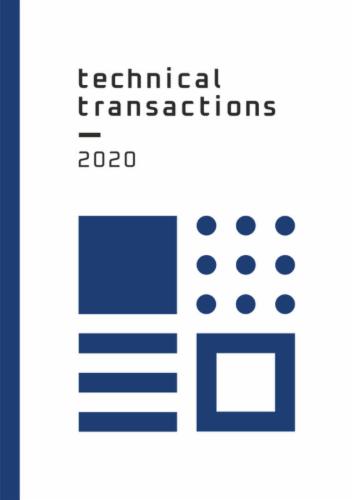Artificial Intelligence overview for optimizing production scheduling in a picture framing company
Demand for and Development of Greenery in Historic Town Squares: The Case of Zakliczyn
The Technical Transactions is an international scientific journal that publishes high quality research results of employees of scientific institutions. The journal was launched by the Lviv Polytechnic in 1883. Since 1946, the publishing tradition of the journal has been continued by the Cracow University of Technology.
Since 2013 onwards, Technical Transactions have been published exclusively in English. All articles are published in open access. The overall focus is on original and rigorous scientific research results which hold international significance.
The aim of Technical Transactions is primarily to enable scientific employees to disseminate original, scientific, theoretical or applied research and to present and promote their achievements on the international stage. Academic research spearheads the development of engineering science and technology. In order to guide this advancement and offer high-level international platform for engineering exchanges, Technical Transactions works with renowned experts and scholars worldwide. The high scientific level of the articles is the responsibility of the Scientific Council, which consists of outstanding specialists. Each text is reviewed by two independent reviewers from outside the author's home institution, including one with foreign affiliation. The content of each article is additionally language-checked by a native speaker.
The scope of the journal cover selected issues related to:
- architecture and urban planning,
- automation and robotics,
- biomedical engineering, construction and operation of machinery,
- construction,
- electronics and electrical engineering,
- energy,
- physics,
- computer science,
- chemical engineering,
- material engineering,
- engineering environment,
- mathematics,
- mechanics,
- chemical technology,
- transport.
Archiving
Sciendo archives the contents of this journal in Portico - digital long-term preservation service of scholarly books, journals and collections.
Plagiarism Policy
The editorial board is participating in a growing community of Similarity Check System's users in order to ensure that the content published is original and trustworthy. Similarity Check is a medium that allows for comprehensive manuscripts screening, aimed to eliminate plagiarism and provide a high standard and quality peer-review process.

 Perfil de Orcid
Perfil de Orcid